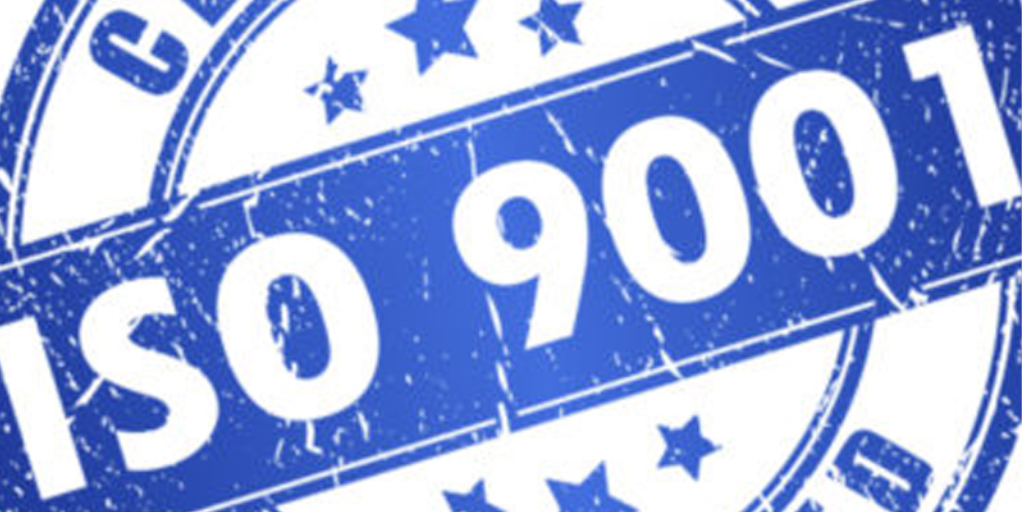
“Great things happen when the world agrees”
ISO, The ISO Story
I’m guessing you’ve heard of ISO. You probably know it’s got something to do with standards, and maybe you’ve even read a couple of articles around ISO certification and ISO audits.
But, if I asked you: what does ISO stand for, where does it come from, and why was it created…would you know? 😬
Don’t worry, you’re not alone: I didn’t know all the background before I wrote this FAT FINGER post.
But, considering that over 1.3 million companies worldwide have received some sort of ISO certification (a figure which is rising by roughly 3.8% each year), I think it’s time to climb aboard the ISO train and find out:
- What does ISO stand for?
- Where did ISO come from?
- Why was ISO created?
Let’s go, ISO…🚂
What does ISO stand for?
The ISO is the largest publisher of standards in the world. But, contrary to popular belief (my own included) ISO is not an acronym. I always thought it stood for something like the “International Standardization Organization”. But no.
Allow me to explain.
The ISO is a voluntary, internal organization with 165 members, from around the world. The ISO generates and publishes globally recognized standards for everything; from quality management systems and IT security protocol to units of measurement and occupational health and safety.
Each member of the ISO represents their own country’s standards authority. For example, The American National Standards Institute (ANSI) is the United States representative, and the British Standards Institution (BSI) is the British standards representative.
When creating a standard, each member of the ISO acts in the best interests of the vendors, manufacturers, consumers, professionals, and government bodies in their country. Standards, therefore, have to go through a hefty six-stage process and be agreed upon by consensus before they are published.
The ISO’s six-stage standard development process
New standards are usually developed in response to a request made by an industry sector, a stakeholder, or a consumer group.
ISO standard development: Stage 1
The first step in the six-stage standard development process is the proposal stage. The ISO committee has to determine if this new international standard is needed: Is it globally relevant? What problem will it solve? How will it improve the current situation?
Once the proposed standard has been thoroughly dissected and discussed, it goes to a vote. If the consensus is “yes, this global standard is needed”, then the members who are willing to work on it are determined and the standard moves into the second stage of development: The preparatory stage.

ISO standard development: Stage 2
A working group of industry experts is then put together and, lead by the ISO members who agreed to work on the standard, potential issues are rooted out, conformity is assessed, and the technicalities of the proposed standard are hashed-out.
These findings are pulled together and put into a draft document which gets submitted to the entire working-group, as part of the third stage: The committee stage.
ISO standard development: Stage 3
The draft proposal is circulated, reviewed, tweaked, updated, and iterated until a vote is taken and a consensus is reached.
The proposed standard then becomes formally known as a Draft International Standard (DIS), is sent to the entire ISO organization, and reaches the fourth step: The enquiry stage.
ISO standard development: Stage 4
During this stage, members of the ISO have 12 weeks to comment on the DIS and vote for or against it. If less than 75% are in favor of the standard, it goes back to the proposal or preparatory stages, and work on it continues. But, if more than 75% of the organization is in favor of the standard, it becomes a Final Draft International Standard and enters the next stage: The approval stage.
ISO standard development: Stage 5
This is where the Final Draft International Standard is circulated, once more, to all members of the ISO organization who vote for or against it one, last time.
If the standard is approved by vote, the standard reaches the sixth and final step: The publication stage.
ISO standard development: Stage 6
This is where the standard is sent to the ISO Secretariat who then makes it public! 🥳
Now we know a little more about what the ISO is and what it does, we can go back to the original question: “What does ISO stand for?”
Well, being an organization entirely focused on standardization, it kinda makes sense that the name ISO actually comes from the Greek word “isos”, which means “equal”. Even the name of the organization is standardized…🤦
Ok, now we’ve answered: “What does ISO stand for?” it’s time to look at the next logical question…
Where did ISO come from?
ISO was created in 1947 when delegates from 25 countries met in London to discuss global standardization.

Source
Fast-forward four years, and ISO/R 1:1951 the first ISO standard was created (which still exists as ISO 1:2002) to outline the global recommendations (they were called recommendations back then, not standards) for industrial length measurements.
But it wasn’t until the start of the 1970s that ISO started to become an international organization for standardization. Up until then, few countries were truly involved in the creation of standards.
ISO’s global presence was kick-started by the Secretary-General at the time; Olle Sturen who, in one of his first speeches, profoundly announced that “International standardization was the end of technical nationalism.”
During his time at ISO and throughout the ’70s, Sturen made it his mission to visit every single member of the organization, across all 25 countries to encourage active participation. And it worked.
50 years later and the organization now has 165 members with experts from over 780 technical bodies. It has published over 21,000 international standards, and the number of ISO certificates they’ve issued is growing by approximately 3.8% each year.
We now have answers to the questions; what does ISO stand for and where did it come from.
Next on the list is…
Why was ISO created?
As we discovered earlier in the “What does ISO stand for?” section, the ISO standardizes business, manufacturing, and quality practices so that the products organizations make, the manufacturing methods, tools, and equipment they use, and the quality of what they produce is safe, reliable, and fit for us, as consumers.
For example, imagine if ISO 22000 (the international standard for food safety) didn’t exist.
Every time you bought food from a store, a takeout, or a restaurant you’d have no way of knowing how that food had been handled. You wouldn’t know if food hygiene measures had been applied, or if proper food preparation practices had been followed. You’d have no idea if the food you were consuming was safe or not.

ISO 22000 was created by the ISO to regulate the food industry and ensure that all food producers managed the safety of their food products and the well-being of their consumers properly.
We’ve touched on the importance of ISO 22000 and why it was created, but what about some of the other popular ISO standards?
ISO 9000 – Quality Management

What is it?
ISO 9000 was first published in 1987 and is a series of standards that are centered around quality management and quality assurance. This group of standards lays out best practices, guidelines, and a common vocabulary for quality management systems.
The series is intended to guide companies and equip them with the tools they need to continuously improve the quality of their products and services to ensure that their customer demands are always met.
The standards within this quality management family include:
- ISO 9001:2015: Quality Management Systems – Requirements
- ISO 9000:2015: Quality Management Systems – Fundamentals and Vocabulary
- ISO 9004:2018: Quality of an Organization – Managing for the Sustained Success of an Organization
- ISO 19011:2018: Guidelines for Auditing Management Systems
Why was it created?
“ISO 9000 standards were developed to help manufacturers effectively document the quality system elements that need to be implemented to maintain an efficient quality system.”
Investopedia, ISO 9000
ISO 9001, in particular, is now seen as a basis for quality management in the education, government, and service sectors. Not only that, but compliance with any of the ISO 9000 standards is becoming critical if you want to remain competitive in any industry.
Think about it, which would you choose; a company that has proven it can produce a high-quality product or one that can’t?
How to implement it?
There are several ways to implement any of the standards within ISO 9000, and it largely depends on the sophistication of your current quality management process and the size of your company.
But, it’s worth taking the time to create a detailed plan or checklist that you can work through to make sure you’re meeting the standards set-out in each ISO 9000 standard.
Like this FAT FINGER ISO 9001:2008 QP08 Contract Review and Planning Checklist, for example.
To use this checklist template, simply add it to your FAT FINGER account and get started. If you don’t have a FAT FINGER account yet, sign up for a free trial here.
ISO / IEC 27000 – Information Security Management Systems

What is it?
Sometimes referred to as the ‘ISMS Family of Standards’, ISO / IEC 2700 is a series of standards that provide a framework for the secure handling of confidential information.
They help organizations manage the risks associated with, and the security of, their intellectual property, financial data, and employee information.
46 individual standards make up the ISO / IEC 27000 set of standards. But, the cornerstone standard is ISO 27001. This standard lays out the specification for an ideal information security management system (ISMS) and is the only one that organizations can be audited and certified against.
Why was it created?
“As technology continually evolves, new standards are developed to address the changing requirements of information security in different industries and environments.”
IT Governance, ISO 27000 Series of Standards
The ISO / IEC 27000 was originally developed by the ISO to combat the rapid increase in cyber threats. But as technology has evolved, so has cybercrime. Nowadays, the financial and reputational damage caused by data breaches has reached devastating proportions.
So, organizations need to protect the safety and security of their information, using the ISO / IEC 27000 series as a guideline.
How to implement it?
Implementing and following any of the ISO 27000 standards can be a long and complicated process. So, it’s worth pulling an implementation team together and developing an implementation plan.
Within this plan, you can list out all the requirements for each of the standards within ISO 27000. Like this ISO 27001:2013 Internal Audit Report checklist does, for example.
That way, everyone in the team has visibility, everyone knows which tasks need to be done by when, and everyone can track the progress being made.
ISO 14000 – Environmental Management

What is it?
This family of standards is related to environmental management and includes guidelines for companies to manage their environmental responsibilities.
Each standard within this series has been developed to help organizations minimize the effect their operations are having on the environment and comply with environmental laws and regulations.
Why was it created?
Did you know that each year, around 7 million people die as a result of poor air quality? And that organizations are one of the biggest contributors to greenhouse gas emissions? These statistics are frightening and they’re getting worse: We’re set to run out of rain forests by 2100, food by 2050, and water by 2040.
ISO 14000 is your chance, as an organization, to do something about it. To take responsibility for the part you play in damaging the environment.
How to implement it?
Like with the other ISO standards we’ve covered, it’s worth creating a plan or checklist that breaks down the standard into bitesize steps that you can work through to make sure you’re meeting ISO 14000 standards.
As we’ve discovered, checklists are a simple way to lay out what requirements you need to meet, allowing you to work your way through each one methodically.
As you can see, using a BPM tool like FAT FINGER to document ISO requirements into a checklist, will help you stay on track and meet whatever ISO standards you’re working towards.
What is FAT FINGER?
FAT FINGER is a no-code application building platform that allows you to quickly and easily document processes into easy-to-follow checklists. Use the drag-and-drop editor to either create templates from scratch or edit one of our many pre-made ones. Then, run individual checklists from these templates each time you need to complete a process.
Watch this video to get a quick overview:
Assign specific tasks to your team, receive notifications when a task is due, and connect your workflows to your existing platforms, tools, and apps to push and pull in real-time data.
To conclude “The Ultimate Guide to ISO: What Does ISO Stand For? Where Did It Come From? Why Was It Created?”
The ISO is an international organization that develops and publishes standards that help regulate systems, quality, tools, and environments. This levels-out the playing field and ensures that customers get a fair deal, every time.
I hope this has cleared up any questions around what does ISO stand for. If you want to know more, put your questions in the comments below…



